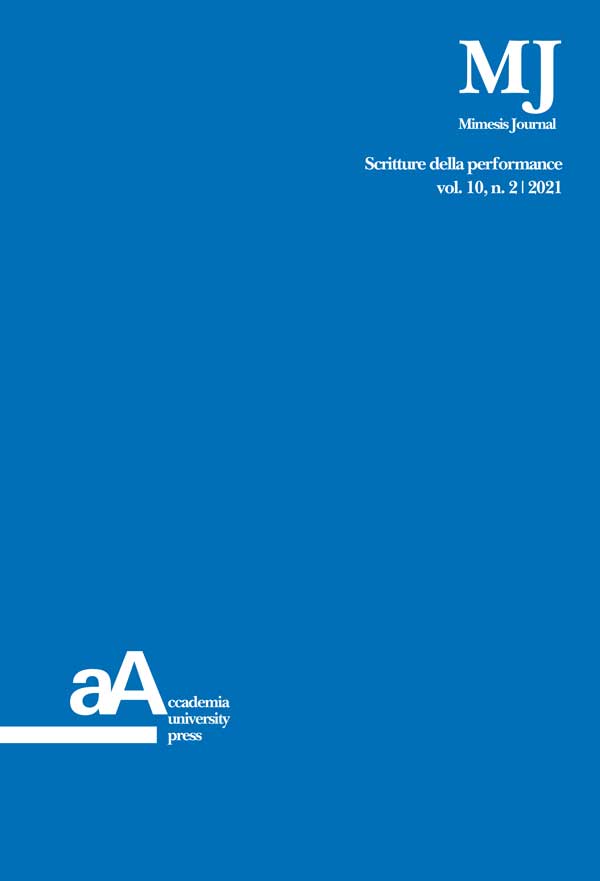Nemesi performativa
Scritture, corpi e immagini nella ricerca di Lina Mangiacapre e delle Nemesiache
DOI:
https://doi.org/10.4000/mimesis.2289Abstract
The Lina Mangiacapre and Nemesiache research has to be situated in the geography of feminisms of the Seventies and of those that are more engaged on the side of the practices. Starting from 1970, Mangiacapre begins a path that moves from writing to theater to painting to photography, with the aim at creating a unique feminist art-world. This contribution explores Mangiacapre performative activity (Cenerella and Siamo tutte prigioniere politiche) and work as a visual artist and photographer, highlighting the hypothesis of performativity, as a crea-tive action of writing and bodies and as a critical discourse of political imagination.


